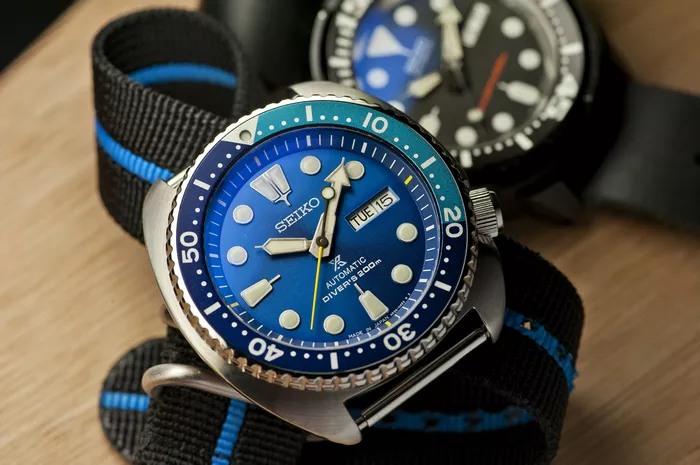The Omega Speedmaster is one of the most iconic and sought-after watches in the horological world. Known for its rich history and association with space exploration, particularly its role in NASA’s Apollo missions, the Speedmaster remains a symbol of precision and durability. If you’re a watch enthusiast, understanding the production volume of Omega Speedmasters each year can give you insight into its exclusivity, market value, and the brand’s manufacturing strategies. This article aims to provide a detailed, point-by-point exploration of how many Omega Speedmasters are made annually.
Historical Production Trends
Early Production
1957-1960s: The Omega Speedmaster was introduced in 1957. During the early years, production was relatively limited. Omega focused on quality and precision, ensuring each watch met stringent standards.
1960s Space Program Influence: The Speedmaster gained prominence due to its role in NASA’s space missions. This era saw an increase in production to meet growing demand, but exact figures are scarce.
Post-Moon Landing Era
1970s-1980s: After the moon landings, the Speedmaster became a collector’s item. Production increased to cater to a broader audience, though specific annual figures remain uncertain.
Modern Production Estimates
General Production Volumes
Annual Estimates: Omega does not publicly disclose the exact number of Speedmasters produced each year. However, estimates suggest that Omega manufactures between 20,000 and 30,000 Speedmasters annually. This number fluctuates based on market demand, production capacity, and special editions.
Limited Editions and Special Releases
Limited Editions: Omega frequently releases limited-edition Speedmasters to commemorate significant events or anniversaries. These editions are often produced in quantities ranging from 500 to 2,000 pieces.
Special Releases: Regular models are produced in higher volumes compared to special editions. For instance, popular models like the Speedmaster Professional “Moonwatch” have a higher production rate to meet global demand.
Factors Influencing Production Numbers
Market Demand
Consumer Interest: The demand for Omega Speedmasters is influenced by factors such as trends, collector interest, and historical significance. High demand may lead to increased production.
Economic Conditions: Economic factors also impact production. During economic downturns, Omega might reduce production to maintain exclusivity.
Manufacturing Capacity
Production Facilities: Omega’s ability to produce Speedmasters is constrained by its manufacturing capabilities. The company operates several facilities, but capacity limitations can affect production numbers.
Technological Advancements: Advances in watchmaking technology can enhance production efficiency, potentially increasing the number of Speedmasters produced.
See Also: How To Spot A Fake Omega Speedmaster
Omega’s Production Strategy
Quality Control
Stringent Standards: Omega emphasizes high-quality standards for its Speedmasters. Each watch undergoes rigorous testing and quality control, which can limit the total number produced.
Craftsmanship: The attention to detail and craftsmanship involved in making Speedmasters also plays a role in production volumes. Skilled artisans ensure each watch meets the brand’s standards.
Market Positioning
Exclusivity vs. Accessibility: Omega balances exclusivity with accessibility. While some models are produced in large quantities, others are limited to enhance their desirability and collectible value.
Brand Strategy: Omega’s production strategy reflects its brand positioning. The Speedmaster’s role as a symbol of space exploration and precision is integral to its market strategy.
Special Editions and Their Impact
Commemorative Models
Historical Events: Omega often releases special editions to mark significant historical events, such as anniversaries of moon landings or partnerships with space agencies. These editions are typically produced in limited numbers.
Collector’s Items: Limited-edition Speedmasters are highly sought after by collectors, influencing the overall production strategy. The limited numbers create a sense of exclusivity and value.
Collaboration Models
Partnerships: Omega collaborates with various organizations and celebrities to create unique Speedmaster models. These collaborations often result in limited production runs, contributing to the watch’s exclusivity.
Market Availability and Distribution
Global Reach
International Markets: Omega distributes Speedmasters globally. Production volumes must align with the demand in different markets, affecting overall annual production numbers.
Retail Channels: Omega’s distribution network includes authorized retailers, boutiques, and online platforms. The availability of Speedmasters across these channels can influence perceived scarcity and desirability.
Secondary Market Influence
Resale Value: The secondary market for Omega Speedmasters plays a role in shaping production volumes. High resale values and collector interest can drive demand and influence Omega’s production strategy.
Market Trends: Trends in the secondary market, such as the popularity of vintage Speedmasters, can impact Omega’s decisions regarding new releases and limited editions.
Conclusion
Understanding the annual production numbers of Omega Speedmasters involves considering a range of factors, from historical production trends to modern manufacturing practices. While Omega does not provide specific production figures, estimates suggest a range between 20,000 and 30,000 units annually, with variations for special and limited editions.
The balance between exclusivity, quality, and demand influences how many Speedmasters are made each year. Omega’s commitment to craftsmanship and its strategic approach to production ensure that each Speedmaster maintains its status as a coveted and celebrated timepiece.

